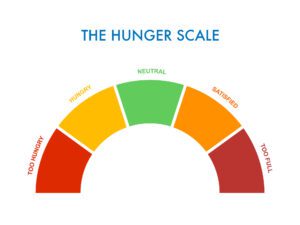Satiety Trials
September 2022Over the past year, we’ve seen increased interest in appetite and satiety trials. Dr. Alexandra Jenkins, Senior Scientist at INQUIS, answers some common questions about satiety trials:
What kinds of products are suitable for satiety testing?
Many products are marketed as promoting feelings of fullness or helping consumers manage their weight and stick to a diet plan. Feeling full and staving off feelings of hunger plays a large role in this pursuit. A lot of the testing we do looks at products marketed as snacks, meal replacements, or specific satiety-boosting elements of weight loss plans.
What does a satiety trial look like?
Some satiety trials examine a food and its effects on feelings of hunger and fullness, allowing us to isolate the satiation peak and determine the length of its effect. Other satiety trials compare a product to a control, to determine if it is more satiating than another product.
How many subjects are in these trials?
A satiety trial will typically have between 40-80 subjects. I always tell clients that there is a lot of noise in the system, many other factors that can affect feelings of hunger. Using a higher number of subjects helps filter out the noise and isolate true feelings of satiety and hunger.
What types of measures are in a satiety trial?
It depends on the product being studied and how the client intends to use the results of the research. Subjective measures, which are the most common, involve validated questionnaires, which are administered at specific time intervals. Subjects indicate their feelings of hunger, feelings of fullness, and desire to eat.
Objective measures involve ad-libitum food intake, where research participants are offered ad-libitum food at a specific time interval following the test meal. The amount of food they consume is compared between two products. Other objective measures include measuring satiety hormones through blood sampling. We can advise on which measures to incorporate into a satiety trial based on the product and its intended use.
How long does this take?
Depending on the trial design, a satiety trial can take as little as 8 weeks.
Each trial is submitted to an independent ethics board for review and all research participants provide informed consent. Each trial is governed by Good Clinical Practice (GCP) and the client owns the intellectual property generated by the trial.
What kind of claims can be made based on the trials?
Generally, claims include statements such as: Keeps you full longer; Contains active fibers, Increases fullness, Helps to control hunger, Helps you want to eat less and Keeps you going between meals. However, the type of claim that can be made will depend on where the product is marketed and, of course, on the type of control which was conducted.

